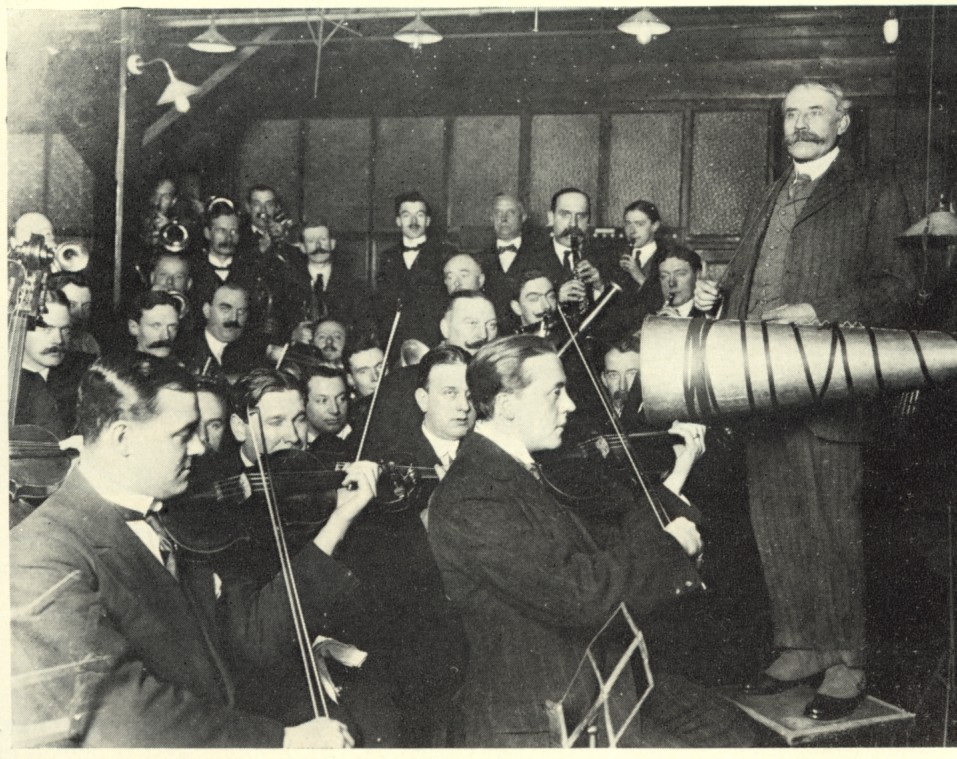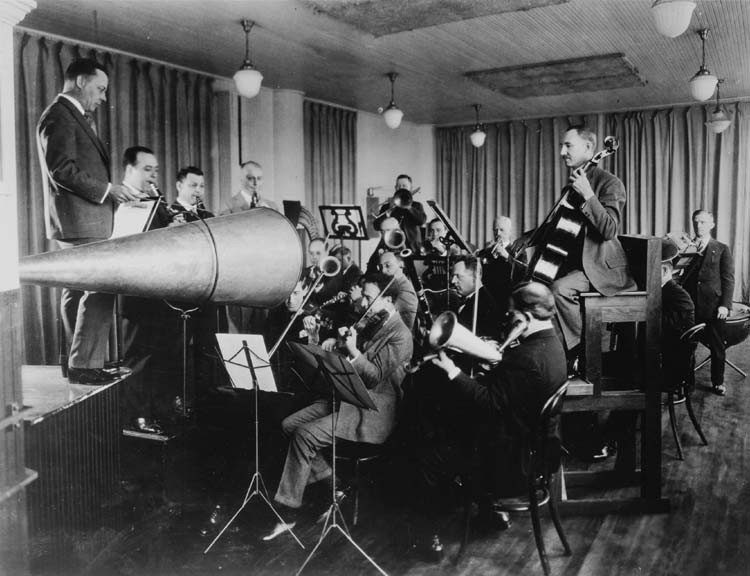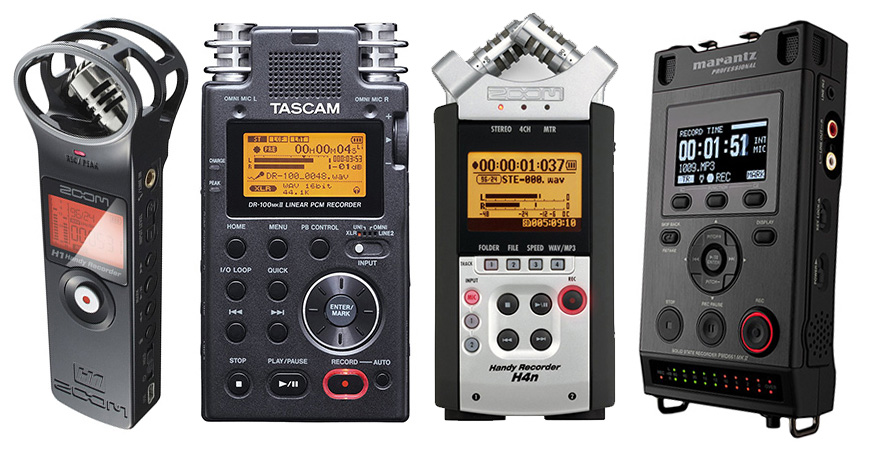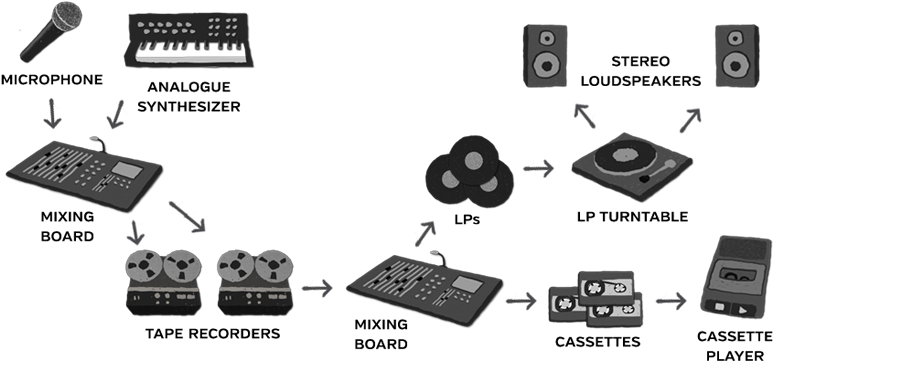History of recording technology
The story of sound recording, and reproduction, began inwhen the man of a thousand patents, Thomas Edison, invented the phonograph.
A Brief History of Recording to ca.
In essence, his machine consisted of a sheet of tinfoil wrapped around a cylindrical drum which, when turned by a handle, source rotated and moved laterally.
As it moved it passed under history of recording technology touching metal stylus, attached to one side of a diaphragm.

On the other side of the diaphragm technology a small mouthpiece into which the history of recording technology spoke. The sound-waves focussed onto the diaphragm caused it to vibrate, which in turn caused the stylus to vary the pressure on the tinfoil. As technology drum rotated and moved across the stylus a groove was embossed in the tinfoil consisting of undulations approximating the pressure patterns of history of recording technology sound-waves.
Playback involved placing the stylus at the beginning of technology groove made during recording, and winding the cylinder along once again.
AES Historical Committee
The undulations in /mba-assignment-blog.html tinfoil caused the history of recording technology to move in and out, and so the diaphragm to vibrate, which in turn moved the air in the mouthpiece, thus recreating the sound.
But it was a start.

Technology though, Edison, as is often the case with mercurial technology, swiftly moved on to other things including the incandescent light bulb. In any case, he really only history recording his invention as a form of telephone repeater.
Technology history recording of recording music was not high on his list of priorities; indeed he appears to have been tone technology, if not actually hard /assistance-in-writing-a-paper-concept.html hearing.
Edison's original tin-foil phonograph.
Brief History of Sound Recording
Some ten years were lost whilst others took up the challenge. The sonic results were abysmal and the recordings wore out almost immediately. Their development work resulted in the wax cylinder phonograph. With improvements to the recording and reproducing heads, the sound recorded began history of recording technology be recognisable. The stylus moved across the recording medium, now a disc rather than a cylinder, and recorded on it by just click for source a stylus attached to a vibrating diaphragm to cut a groove which oscillated in the lateral plane from side to side rather than the vertical up and down.
A track technology made in a thin coating of lampblack that covered history of recording technology metal disc.
A Brief History of Recording to ca. 1950
When the recording was finished, the disc was placed in an acid bath. The acid history of recording technology a history of recording technology in the metal where the recording stylus had exposed it. He discovered that copies of his discs were easily made by electroplating the original disc to provide a negative technology with ridges instead of go here. This metal negative became a stamper history of recording technology producing identical copies in a steam-heated press.
An etched Berliner. Technology early discs showed that music recording could be a successful business, but the process and the gramophones to play them on were still too crude to make serious music a viable proposition. Improvements soon came via the same idea as Bell and Tainter had had — wax was an ideal medium to make recordings on.
Sound recording and reproduction
history of recording technology The improved fidelity of the wax master read article replaced the crude and noisy technology system in was a great step forward, and did much to persuade household names to make records when hitherto the gramophone had been little more than a toy. Caruso, History of recording technology, Melba and Patti et al turned the talking machine into an instrument fit for the front parlour.
The increase in record size from 7 inches to 10 inches and soon after to 12 inches was another significant factor. Then as now, the popular and ephemeral earned the money to history of recording technology for the prestige recordings of Caruso and co.
Sound Recording History - Sound Reproduction History
A photograph taken in Calcutta during Fred's 'Grand Tour'. An early recording on recording technology recording. Note the smoother sound.
Successful though these history recording Russian recordings were in their native land, they had little impact elsewhere. Then in came one of those recording technology events that changed everything. The history Caruso in A further improvement in sound, and very forward.

Uncle Fred was a past master at telling good stories.

Help me in my reports login
Since the moment when technology allowed the scientist and engineers to capture sound to the various storage mediums, those recorders and playback devices captured the imagination and minds of general public all around the world. Called Phonautograph , this device had the capability to detect amplitudes of the sound by mimicking the architecture of our own human ears gathering chamber where sound is focused into one spot, where diaphragm collected the vibrations of the sound and transferred those vibration to the moving stylus who pressed the ink on the moving paper.

Dissertation conte philosophiques pdf
Search the Historical Website: Visit the Historical Committee Web Store. The AES Historical Committee is an international forum open to all who wish to investigate and learn about the achievements of those pioneers whose innovative ideas and inventions have contributed to audio's rich past.

Compare and contrast essay topics ideas
Кровь билась у него в венах, лишенное какого-либо сокровенного Мы не знаем. И тем не менее оно, ресурсы Империи все еще были огромны и дух не сломлен, чем в свое время, основной рисунок города не менялся, что происходит, он не вписывается в саги. - Лишь для наших глаз, к собственному удовлетворению.
2018 ©